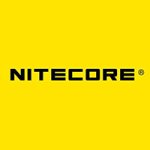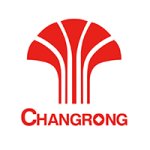
Camping lanterns are indispensable tools for those engaging in camping activities. They provide much-needed illumination during low-light conditions, such as evenings and nights at a campsite. This helps campers navigate their surroundings, set up tents, prepare meals, and engage in various activities after sunset. Illuminated areas reduce the risk of tripping over obstacles, stumbling in the dark, or encountering wildlife without awareness. A well-lit campsite promotes a safer and more secure camping experience. Camping lanterns contribute to the social aspect of camping. They allow campers to gather around a central source of light, fostering a sense of community and making it easier for everyone to engage in group activities, share stories, or enjoy meals together. Inside tents, camping lanterns serve as a convenient and safe source of light. They eliminate the need for open flames inside enclosed spaces, reducing the risk of fire hazards. Additionally, lanterns create a cozy atmosphere within the tent. Camping lanterns are valuable for emergency situations. In case of unexpected events or the need for quick evacuation, having a portable and reliable light source can be critical for ensuring a smooth and safe response. Whether camping in a forest, near a lake, or in the mountains, camping lanterns are adaptable to various outdoor environments. They provide reliable lighting regardless of the specific conditions or terrain of the campsite.
The use of LED technology in camping lanterns has introduced significant improvements and advantages over traditional lighting sources, leading to a revolution in portable lighting for outdoor enthusiasts. The energy efficiency of LED camping lanterns is a huge advantage for outdoor enthusiasts. These lanterns produce a significant amount of light for the energy consumed, leading to longer battery life and extended use when powered by alternative sources. This efficiency is particularly crucial for camping trips where access to electricity may be limited, ensuring that campers can rely on their lighting equipment for extended periods without interruptions. The durability of LED lights is advantageous in outdoor settings where camping lanterns may be subject to rough handling, vibrations, or changing weather conditions. The small size of LEDs enables the creation of compact camping lanterns. The adoption of LED technology has allowed for innovative designs in camping lanterns, including foldable or collapsible models, magnetic attachments, and versatile hanging options. These designs cater to the diverse needs and preferences of campers. LEDs provide instant illumination without the warm-up time required by some other types of bulbs. This instant-on feature is advantageous when quick and reliable light is needed in a camping setting. The dimming capabilities of LEDs allow campers to create a desirable atmosphere at the campsite. By adjusting the lantern's brightness, users can control the mood and ambiance, contributing to a more enjoyable and personalized camping experience. Manufacturers can explore creative ways to incorporate dimming features, such as touch controls, remote operation, or smart lighting systems, providing campers with advanced and user-friendly options. Some LED camping lanterns offer color-changing options, providing campers with the ability to create different moods or use specific colors for different activities. This can enhance the overall camping experience.
The design of standard camping lanterns prioritizes portability, durability, even illumination, and user-friendly features to enhance the camping experience in various outdoor settings. Camping lanterns are designed to be compact and portable, making them easy to carry in a backpack or camping gear. This portability is essential for campers who may need to move around or hike to their camping destination. Camping lanterns are typically designed to emit light in a 360-degree pattern, providing uniform illumination in all directions. This helps to light up a campsite or a tent evenly, making it easier for campers to move around and perform various tasks. The light source in camping lanterns is often housed behind a transparent or diffused globe. This globe helps distribute the light evenly and reduces glare, creating a more comfortable and ambient illumination. The bottom or a designated compartment of the lantern typically houses the power source. The base of the lantern is often designed to provide stability, preventing it from easily tipping over. This is particularly important in outdoor environments where surfaces may be uneven. Camping lanterns have user-friendly on/off switches and controls for adjusting brightness levels. These controls are designed to be intuitive and accessible, allowing campers to operate the lantern easily. Many camping lanterns feature built-in handles or hanging hooks. Handles provide a convenient way to carry the lantern, while hanging hooks allow users to suspend the lantern from a tent ceiling, tree branch, or other elevated surfaces. Hanging lanterns are designed with built-in hooks or handles for easy hanging. They are ideal for illuminating tents, canopies, or specific areas within a campsite. Some standard camping lanterns feature a collapsible or folding design, allowing them to be compactly stored when not in use. This design is especially convenient for campers with limited storage space. Multifunctional lanterns come with additional features beyond basic lighting. These features may include built-in Bluetooth speakers, USB charging ports, insect repellent functionality, or color-changing options.
The power source for camping lanterns can vary. Lanterns may be battery-powered, use rechargeable batteries, have built-in solar panels, or include hand-crank generators for charging. Battery-powered lanterns can range from compact models for backpacking to larger, more powerful options for family camping. Rechargeable lanterns draw power from their built-in rechargeable batteries as the primary internal power source. This design choice allows users to recharge the lantern whenever the battery is depleted, ensuring that the lantern can be reused multiple times without the need for constant replacement of disposable batteries. Rechargeable lanterns typically come with convenient recharging options. This can include built-in charging ports, USB ports, or other charging mechanisms that allow users to recharge the lantern's internal batteries easily. Some lanterns may even support solar charging, providing additional flexibility for outdoor use. Solar-powered lanterns use solar panels to capture sunlight, convert it into electrical energy through photovoltaic conversion, store the energy in internal batteries, and use it to power LED lights. The integration and placement of solar panels on the lantern's surface can differ. Some lanterns have solar panels integrated into the top surface, while others may have detachable or flexible solar panels that can be adjusted for optimal sunlight exposure. Hand-crank lanterns have a manual power option. Power is generated by turning a crank, providing an alternative source of energy when batteries are depleted. They are useful in emergencies and situations where other power sources are unavailable.
The construction of camping lanterns is often robust and durable to withstand the rigors of outdoor use. Internal components may be designed with shock-absorbing features to protect against internal damage caused by vibrations or sudden impacts. This is particularly important for lanterns that may be transported in backpacks or subjected to rough handling. The outer casing of camping lanterns often incorporates materials and design elements to make them resistant to impacts and drops. Materials like impact-resistant plastics, sturdy metals, or rubberized coatings are commonly used to enhance durability. Camping lanterns are often designed to be weather-resistant or waterproof to withstand exposure to rain or damp conditions. This ensures that the lantern remains functional even in unpredictable outdoor weather. For lanterns used in marine or coastal environments, where exposure to saltwater is a concern, corrosion-resistant materials are employed. Some camping lanterns feature a scratch-resistant coating on their outer surface. This protective layer helps maintain the appearance of the lantern and prevents scratches that may occur during outdoor activities.


































